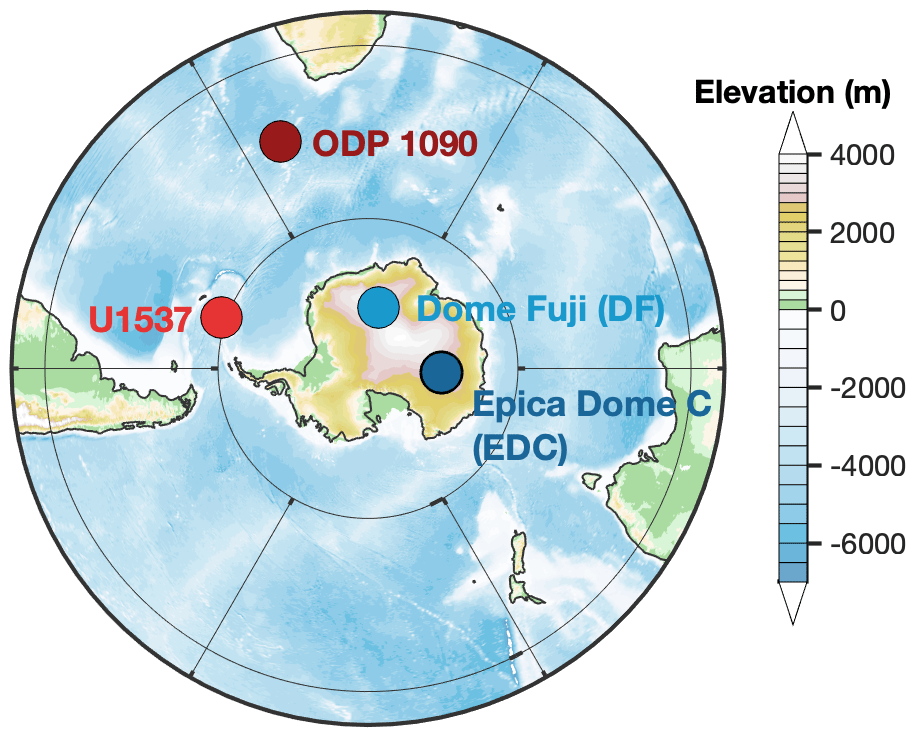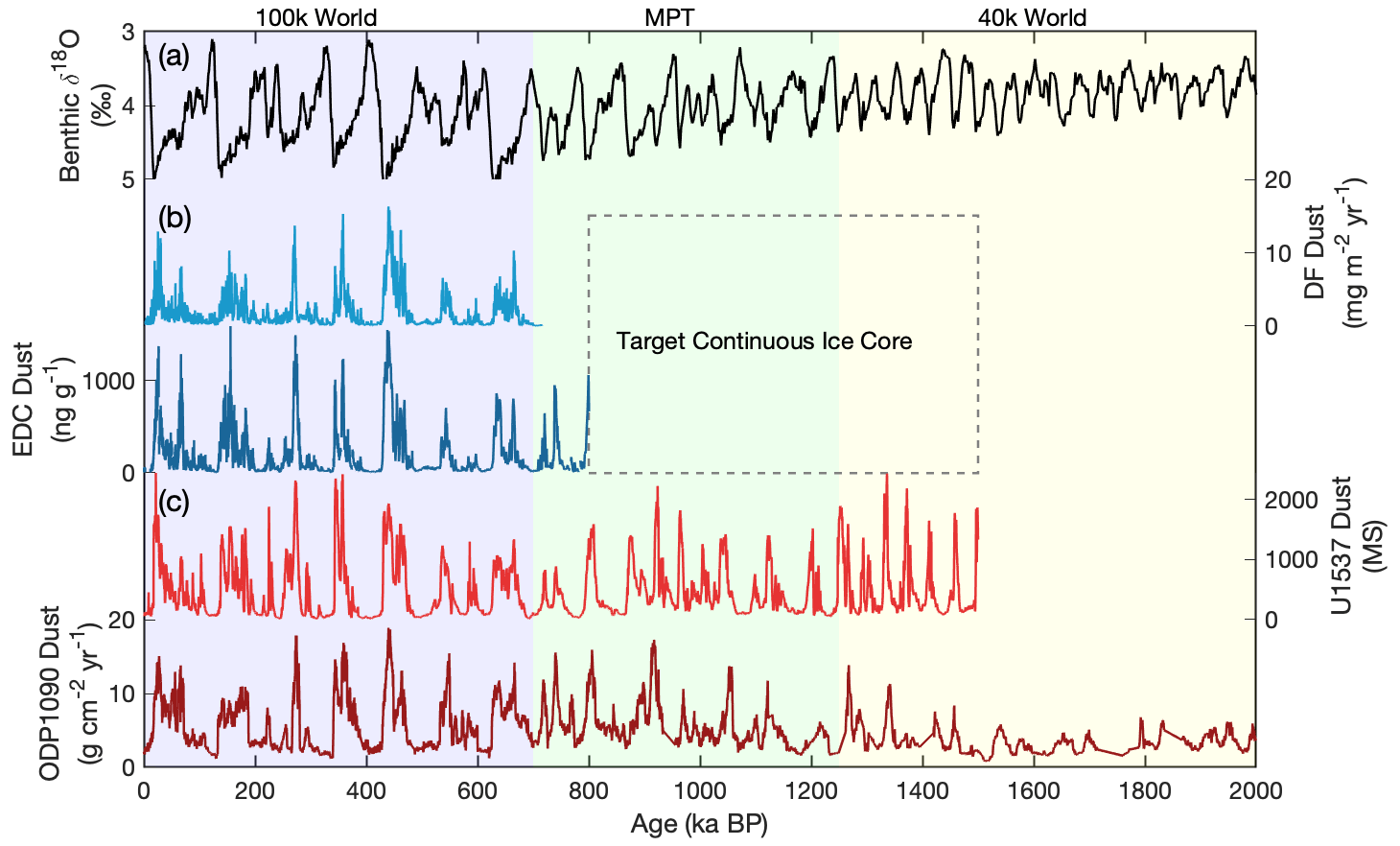Scientists seeking an intact ice core stretching back 1.5 million years have found what they think could be a Rosetta stone in the quest to almost double the current record. This still won’t be the oldest ice ever obtained, but will provide something much more valuable when it comes to understanding the planet’s climatic past and future.
Air bubbles trapped in ice, and the ratio of oxygen isotopes in the water molecules themselves, can provide a great deal of information about the conditions under which snow was deposited. Dust trapped in the ice can perform a similar role. It’s the best climate proxy we have for many eras, since tree rings seldom stretch back more than a few thousand years, and sediments or stalactites often provide a more localized perspective.
That said, ice doesn’t last forever, even at the poles. Greenland ice cores can only reach back to times when the island warmed enough to melt in summer. Even in Antarctica, ice doesn’t just sit there, instead flowing slowly to the sea, suffering distortions in the process. The longest continuous ice core ever identified dates back 800,000 years. A sample of ice estimated to have been laid down 4.6 million years ago has been obtained recently, but this was at the end of a glacier where old ice was pushed to the surface, disconnected from the record of what happened after it was deposited. We need a movie, not a snapshot.
There are several obstacles to finding records that tell the whole story, but a team of researchers think they’ve overcome one of them.
To preserve ancient ice; “The geothermal heat flux of the bedrock must not be high enough to melt the basal ice containing the oldest ice, the ice sheet must not be so thick that it insulates the geothermal heat and melts the basal ice, and the bedrock topography must not have disturbed the stratigraphy,” the study authors write.
It would help if we knew where geothermal activity was low, but our mapping of Antarctica in that regard is poor. Given it can take years to collect a core reaching down to Antarctic bedrock, the cost of picking the wrong spot is enormous.
To improve our chances some teams are using a process known as “rapid-access drilling”. As the name suggests, these drill through the ice far more quickly, but they don’t actually collect much ice for analysis. Instead, rapid-access drilling allows instruments to be lowered into the hole which can provide some limited information, potentially including clues to the age of the ice, and therefore whether a site is worthy of being chosen for a conventional bore.
It is here that the team of researchers think they can help. One clue about the age of ice near the bottom of a rapid-access drill comes in the dust there, which can be studied using optical instruments lowered into the hole.
The authors compared dust collected from drilling in Antarctica with what has been collected from deep ocean sediments. They conclude that the sediments from a site known as U1537, in the South Atlantic off South America, can show us the age of dust samples.

A comparison of locations for drilling in search of the oldest ice, and the two main sediment sites that can be used for comparison.
The sediments from U1537 match what has been collected at locations across the East Antarctic Plateau better than that from any other ocean sediment site. U1537 offers us a sample dating back 1.5 million years, showing the way dust quantities and composition changed over that time. Peaks and troughs in the dustiness of ice, as well as changes of the composition of that dust, will allow drillers to identify the age of their samples when calibrated against U1537, revealing if they’ve found the right spot to take a traditional core.
One of the reasons so much effort is going into obtaining such old ice is the hope it could explain a shift that occurred around a million years ago.

Sediment records indicate cycles of glacial and interglacial used to be shorter and less intense. Ice cores could provide details and explain the shift.
Modern ice ages, more properly known as glacial eras, last around 100,000 years between interglacials a fraction of that length. However, ocean sediments indicate this was not the case prior to 1.2 million years ago, when it was only around 40,000 years from the start of one glacial to the next.
Then, cycles lengthened gradually until 700,000 years ago. The transition period saw the cycles become less reliable. More importantly, variations became bigger – three of the last four warm times were hotter than anything a million years ago (even before humans interfered), but the coldest point of recent glacials have been a great deal colder than their equivalents before the change.
At least that is what we think, based on the records we have. Suitably, old ice cores would play a big role in confirming we have the history right.
Such a record matters because, as the study authors write; “A central question is why the transition happened, with implications for the fundamental mechanisms of the climate system.”
That’s hard to answer without fine detail on the changes. Explanations that have been offered include the erosion of soil that allowed ice sheets to become thicker during glaciations, and a lowering of atmospheric CO2, but both remain debated.
The study is published open access in the journal Climate of the Past
[H/T Phys.org]
Source Link: Clues Found In The Quest For The Oldest Continuous Ice Core